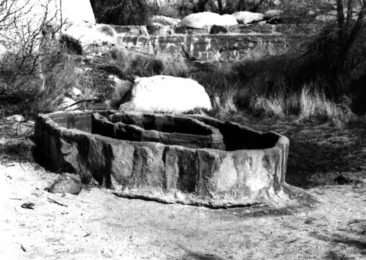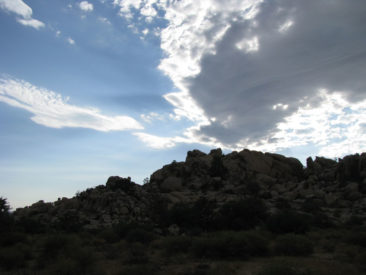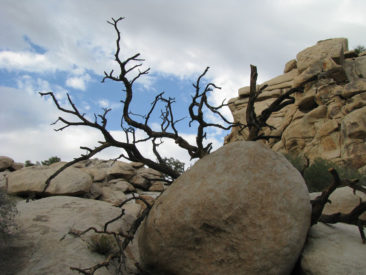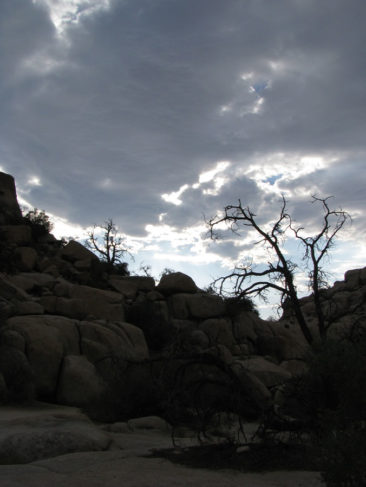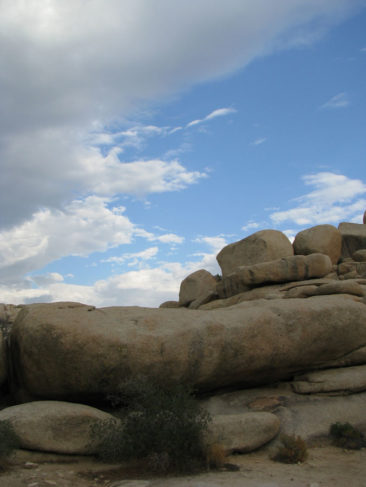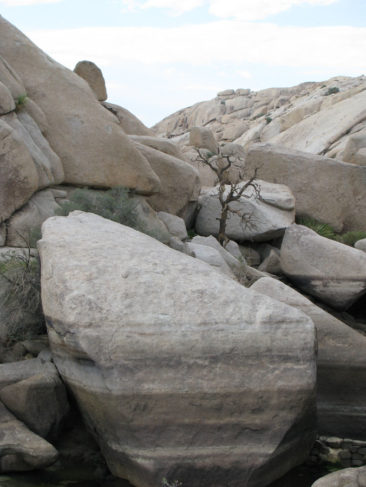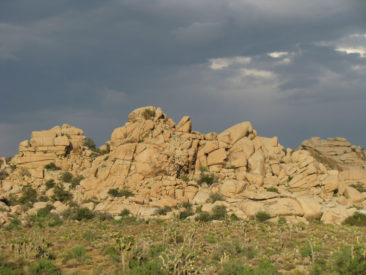Barker Dam Loop Introduction
The Barker Dam loop is an easy 1.1 mile loop with minimal elevation change of about 50 ft.1 It is suitable for children and families and is a great way to explore flora and fauna of Joshua Tree National Park without going on a major expedition. In addition to plants and wildlife, historic western and native sites are on the loop, making this an excellent all around experience for visitors of Joshua Tree.
One thing you should not do on the Barker dam loop is to bring your barker! Dogs are not allowed on any trails in Joshua Tree National Park, and while this is extremely important on all trails, it is especially important on this loop. Watering holes are far and few between in the Joshua Tree. The Barker Dam reservoir is an essential water source for wildlife such as coyotes, rabbits, birds, and desert bighorn sheep – a federally endangered species. Even the mere presence of a dog is enough to leave a scent that can scare away wildlife and prevent them from getting what can be a life-saving drink. Surely that should be deterrent enough for decent folk. Just in case, rangers do patrol this loop and the normally easy-going rangers of the Park will issue citations for dogs on this trail!
Native Americans of the Barker Dam Loop Area
The Barker dam loop is named after an old dam built by cattlemen. Long before the dam though, Native Americans inhabited the area. Natural rainwater collection areas provided drinking water long after rains had passed. Along with the natural pools of water, wild game such as rabbits and desert bighorns provided essential nutrition for the native tribes of the area. These native groups were first the Pinto culture, and then the Chemehuevi, Serrano, and Cahuilla tribes. While not so long ago it was believed that the tribes might have only inhabited the area a few thousand years, the Park now acknowledges the Natives inhabited the area at least 5,000 years2, while the tribes acknowledge the presence of their Native peoples at least 10,000 years, long before European settlers arrived in 1769.3
The Native settlers left art that is still visible today in the form of petroglyphs and pictographs. Petroglyphs are rock carvings while pictographs are rock paintings. Toward the end of the loop is an overhang with such native art. It is fun to imagine the people that made the art and what the symbols might have meant. Just be sure to not walk on or touch the perhaps ancient art, as it can be easily damaged and some art may be faded and not immediately visible.
Barker Dam
Barker dam was made by early western settlers, namely C. O. Barker, in 1900. Back then, there was more rainfall in the area and the area was used for cattle grazing, so a water source was essential. The dam was originally 9’ tall. Stone and cement were used in construction, with stone facing on the non-water filled side. The dam is approximately 150’ long with a unique indented pattern. Back in 1900, cars were an extreme rarity. Sixteen 8-day-long trips were required to haul the cement, forms, and other material from Banning, presumably by horse or mule.4
In 1917, Bill Keys acquired the dam along with Desert Queen in around 1917. 5 Keys and his family raised the dam another 6 ‘ in 1949-50 using cement.6 This allowed for the collection of even move rain water. In addition to drinking water, the water was also used to irrigate a small orchard and garden, and also used as a swimming hole. With less rainfall these days, and also the importance of the reservoir to local wildlife, entering the water is not allowed.
Climbers
Hidden Valley, on the Barker Dam loop, is a great source of bouldering and climbing routes for the more adventurous. For the more casual visitor, watching people scale the rocks can be great fun! While it is important to not trample vegetation and to stay on trail, there are various side trails that sprout off from the mail trail to bring you closer to the large boulders and climbing routes. Hours of fun can be had exploring Hidden Valley of the main loop trail.
Conclusion – The Barker Dam Loop has Something for Everyone
The Barker dam loop is a favorite of many Park visitors, including myself! There is so much nature and history all around! Because it is such an easy trail it is a great starting place for almost any visitor. Other nearby attractions include the Wall Street Mill, Desert Queen mine, and by reservation only Keys Ranch. One downside to the popularity of this trail is that it can be hard to find parking. Arriving early can improve your chances. If you are unable to find parking, you might be lucky enough to meet a friendly camper in the nearby campground or use the Echo T parking lot off Keys Ranch Road. As always, be sure to bring plenty of water and practice leave no trace! Happy trails!
Barker Dam Loop Photo Gallery
- https://www.nps.gov/jotr/planyourvisit/barker-dam-trail.htm
- https://www.nps.gov/jotr/learn/historyculture/people.htm
- https://www.29palmstribe.org/copy-of-our-mission-statement-1
- https://www.nps.gov/parkhistory/online_books/jotr/history3.htm
- http://npshistory.com/publications/jotr/nr-desert-queen-mine.pdf
- http://npshistory.com/publications/jotr/nr-barker-dam.pdf
